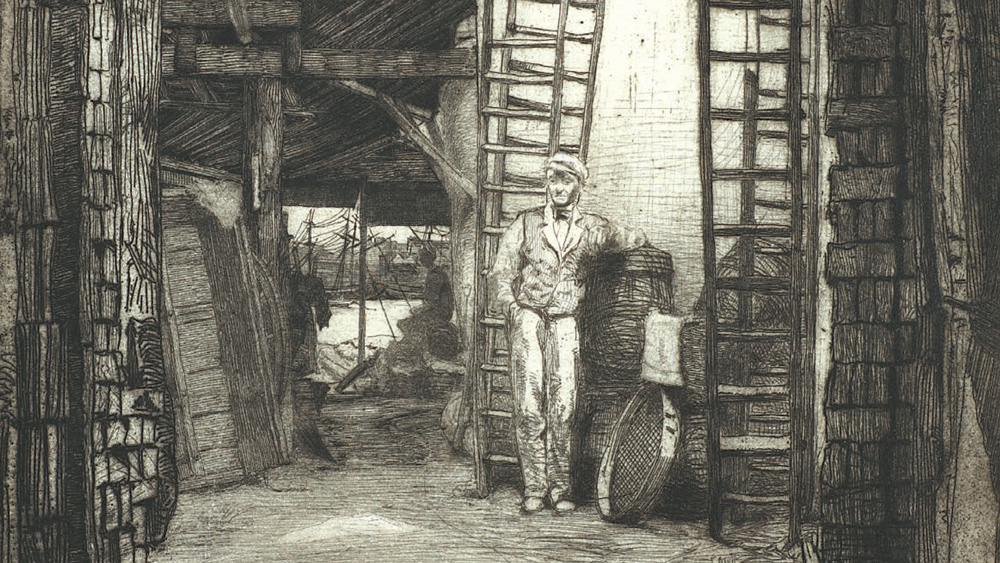Overview
James McNeill Whistler ranks as one of the foremost masters of etching. Much influenced by the prints of Rembrandt, whom he considered “the high priest of art,” Whistler brought to the medium a unique artistic sensibility and a highly refined technical skill. His etchings range from simple plein air sketches done in one sitting to elaborate compositions that underwent multiple states (changes to the printing plate) before completion. A tireless experimenter, Whistler exploited various papers, inks, and ways of wiping his plates to create the luminous effects he sought.
As a London-based American artist who exhibited internationally, Whistler exerted far-reaching influence as an etcher. Artists of divergent backgrounds looked to him for inspiration, and he is credited with helping to ignite an etching revival in Europe and the United States.
Drawn from the holdings of the Portland Art Museum and local collections, this exhibition presents etchings by Whistler and artists who were influenced by his lyrical, atmospheric style and delicate tonal harmonies. Whistler’s views of Venice, in particular, enthralled generations of etchers, as seen in the work of Otto Henry Bacher, Frank Duveneck, James McBey, and Joseph Pennell, among others. All of these printmakers valued spontaneous and free drawing, rather than tightly controlled linearity of reproductive etching. Featuring finely etched lines, richly burred drypoint, and subtle plate tone forming misty atmospheric scenes, their prints have a quiet beauty and power all their own.
Organized by the Portland Art Museum and curated by Mary Weaver Chapin, Ph.D., Curator of Prints and Drawings. This exhibition is supported in part by the Vivian and Gordon Gilkey Endowment for Graphic Arts and the Exhibition Series Sponsors.
Resources


